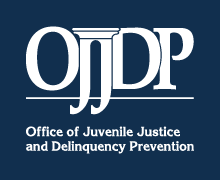Victimization risk
Programs and Services for Black Male Survivors of Community Violence: What’s Effective?
Examining Avoidance, Victimization Risk, and Perceptions of Community Safety in Latinx Communities
Which Latinos Experience Bias Victimization? An Examination of Acculturation, Immigrant Status, and Socio-economic Status
Older Opposite-Sex Romantic Partners, Sexual Risk, and Victimization in Adolescence
No Escape: Mass Incarceration and the Social Ecology of Intimate Partner Violence Against Women
Arming Teachers as a Response to School Violence: Using a Risk Assessment Model to Understand Student Perceptions
Union Status, Union Dissolution, and Intimate Partner Violence: Investigating Johnson’s Typology Among Heterosexual Dating, Cohabiting, and Married Couples
Adolescent attitudes toward police and crime reporting intentions
Perceptions of White-Collar Crime Seriousness: Unpacking and Translating Attitudes into Policy Preferences
Child Maltreatment and Psychiatric Disorders Increase Risk for Stalking Victimization
Self-exciting Point Processes With Spatial Covariates: Modelling the Dynamics of Crime
Confronting Online Extremism: The Effect of Self-Help, Collective Efficacy, and Guardianship on Being a Target for Hate Speech
Federal–local partnerships on immigration law enforcement: Are the policies effective in reducing violent victimization?
The Role of Violence Within and Across Self-Identified Gang Youth
Defining and Studying Elder Abuse Polyvictimization
NIJ Social Science Analyst Yunsoo Park shares her knowledge about elder abuse, a widespread issue in the U.S. and around the world, particularly polyvictimization — the experience of a range of different types of abuse and maltreatment. As much as 11% of community-residing older adults experienced some form of abuse or mistreatment in the past year. Yunsoo discusses risk factors, difficulties in defining and studying elder abuse polyvictimization, and strategies for intervention and prevention. Stacy Lee Reynolds, a Communications Assistant with NIJ, hosts.





